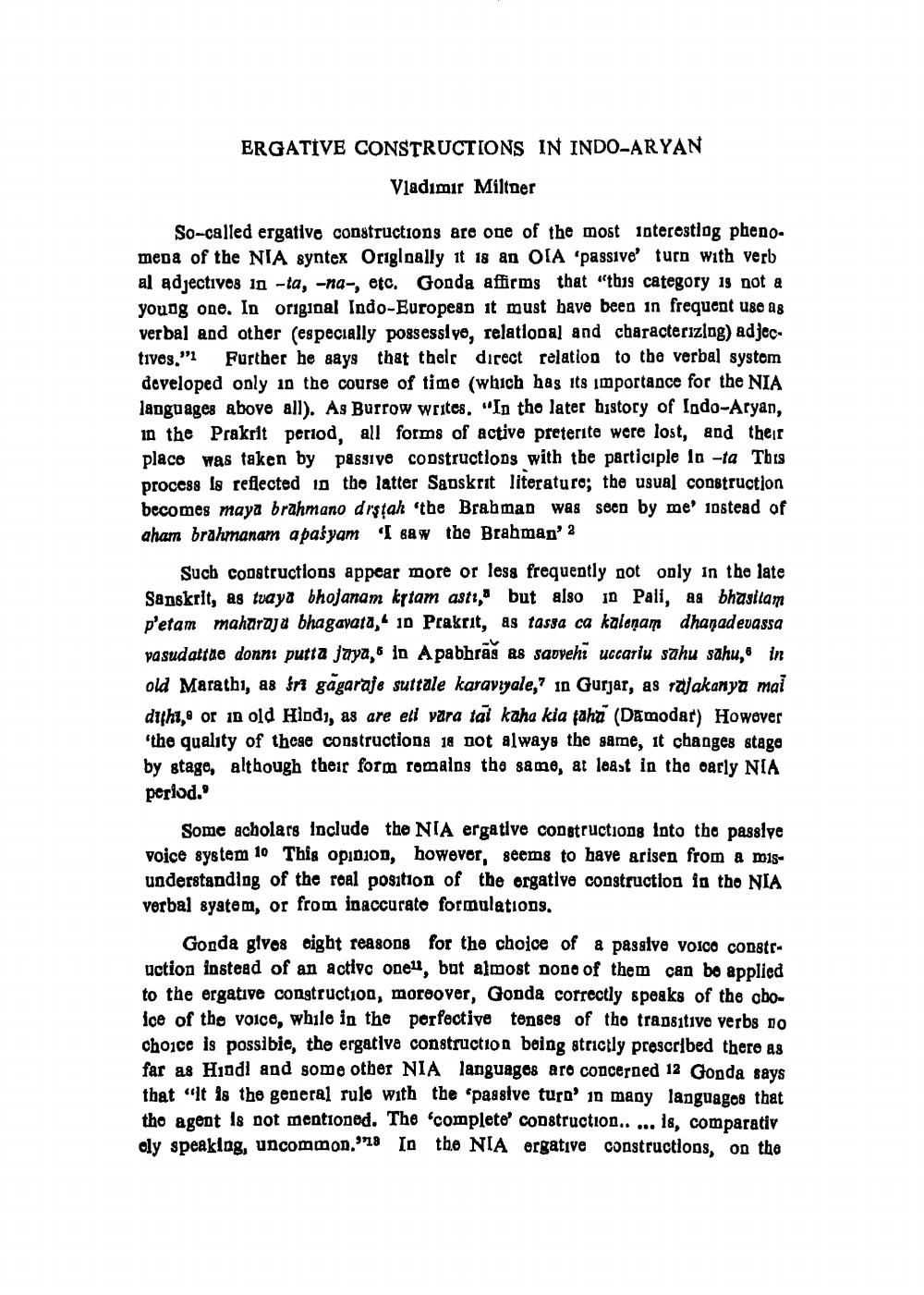________________
ERGATIVE CONSTRUCTIONS IN INDO-ARYAN
Vladimir Miltner
So-called ergative constructions are one of the most interesting pheno. mena of the NIA syntex Origloally it 18 an OIA 'passive' turn with verb al adjectives in -ta, -na-, etc. Gonda affirms that "this category 19 not a young one. In original Indo-European it must bave been in frequent use as verbal and other (especially possessive, relational and characterizing) adjectives."1 Further he says that their direct relation to the verbal system developed only in the course of time (which has its importance for the NIA languages above all). As Burrow writes. "In the later bystory of lodo-Aryan, in the Prakrit period, all forms of active preterite were lost, and their place was taken by passive constructions with the participle In -ta This process is reflected in the latter Sanskrit literature; the usual construction becomes maya brahmano drstah 'the Brahman was seen by me' 10stead of aham brahmanam apaśyam I saw the Brahman' 2
Such constructions appear more or less frequently not only in the late Sanskrit, as tvaya bhojanam krtam asti, but also in Pali, ag bhasilam petam maharaja bhagavata," in Prakrit, as tassa ca kalenam dhanad evassa vasudatrae donni putta jaya, In A pabhras as sauyehi uccariu sahu sahu,& in old Marathi, as fri gagaraje suttale karaviyale,7 in Gurjar, as rajakanyu mai dith, or in old Hindi, as are eli vara tal kaha kia faha (Damodar) However "the quality of thcae constructions 18 not always the same, it changes stage by stage, although their form romains the same, at least in the early NIA period."
Some acholars loclude the NIA ergative constructions into the passive voice system 10 This opinion, however, seems to have arisen from a misunderstanding of the roal position of the orgative construction in the NIA verbal syatem, or from inaccurate formulations.
Gonda gives eight reasons for the choice of a pasalve voico construction instead of an active one, but almost none of them can bo applicd to the ergative construction, moreover, Gonda correctly speaks of the aboice of the voice, while in the perfective tenses of the transitive verbs no choice is possibie, the ergative construction being strictly prescribed there as far as Hindi and some other NIA languagos aro concerned 12 Gonda says that "It is the general rule with the passive turn' in many languages that the agent 18 not mentioned. The complete construction.. ... 18, comparativ oly speaking, uncommon."18 In the NIA ergative constructions, on the




